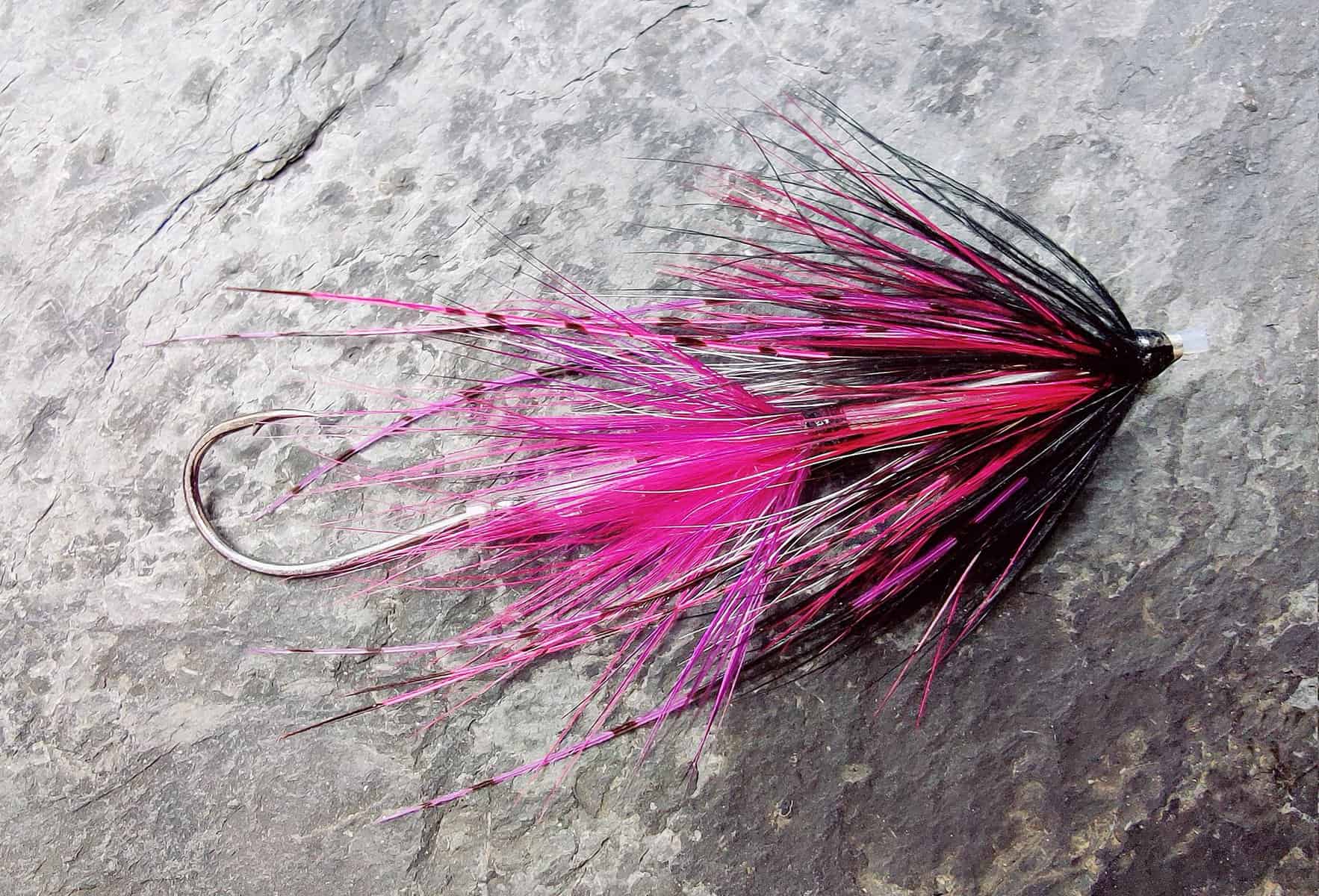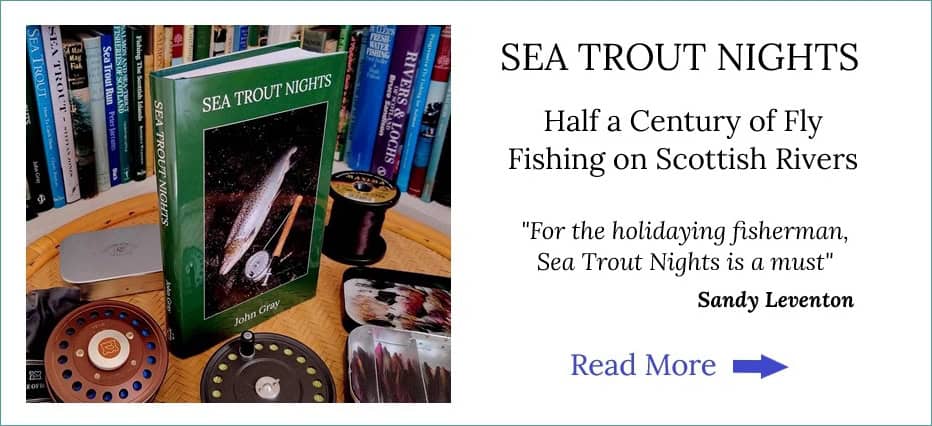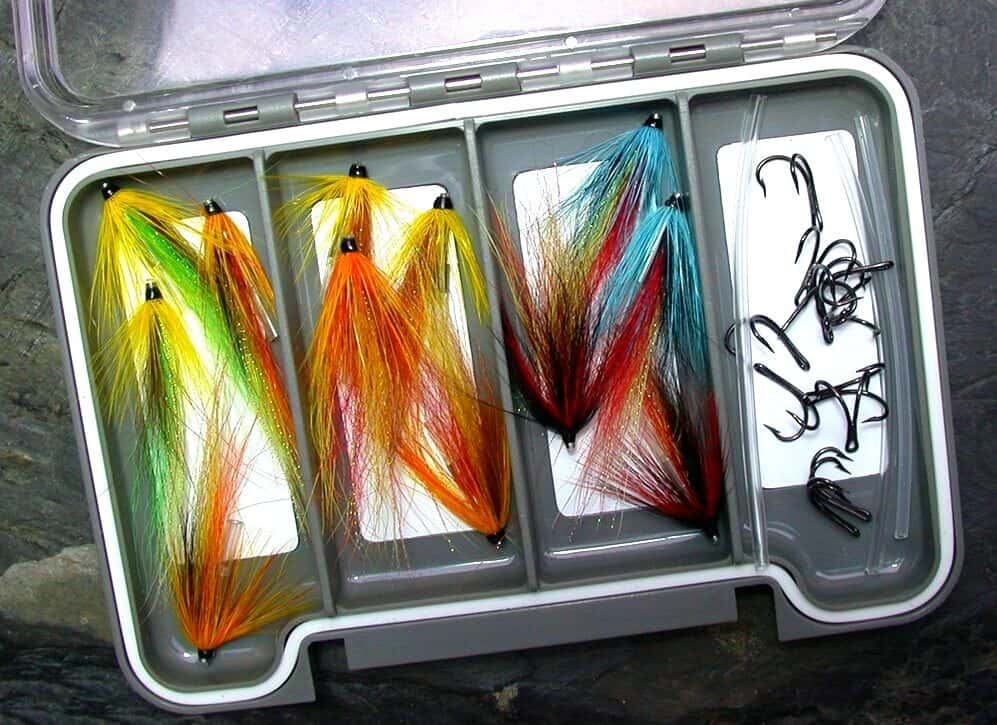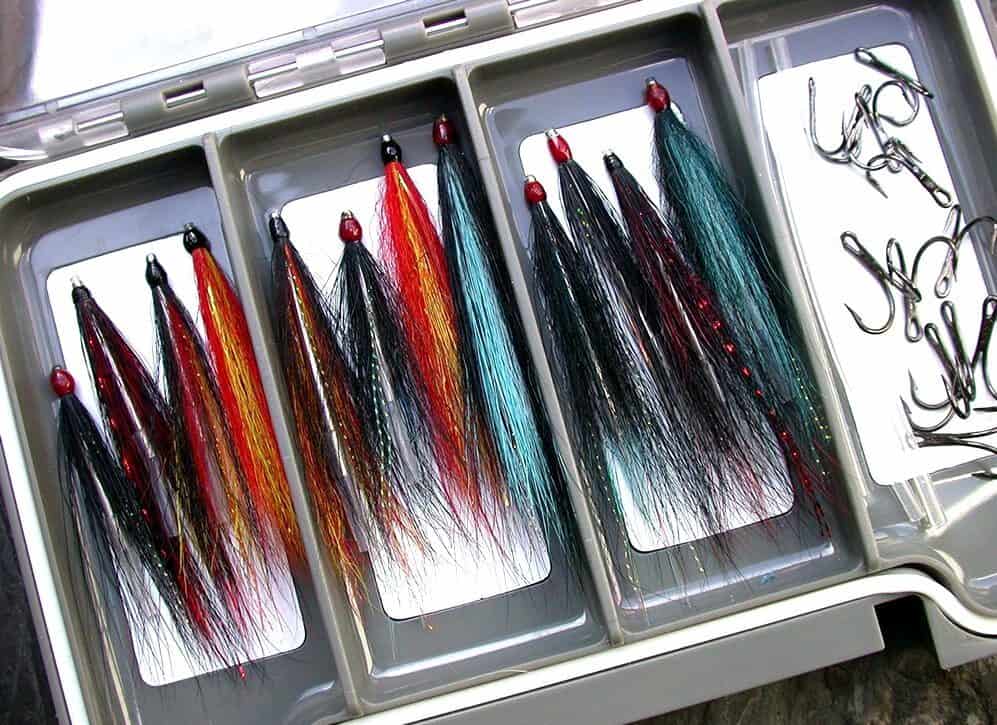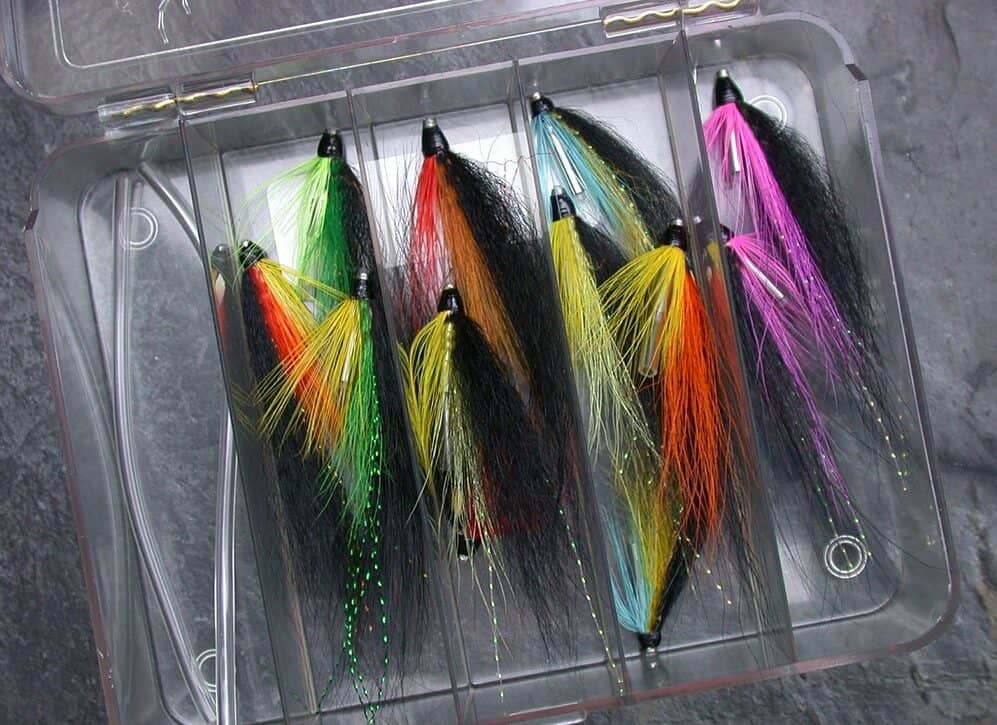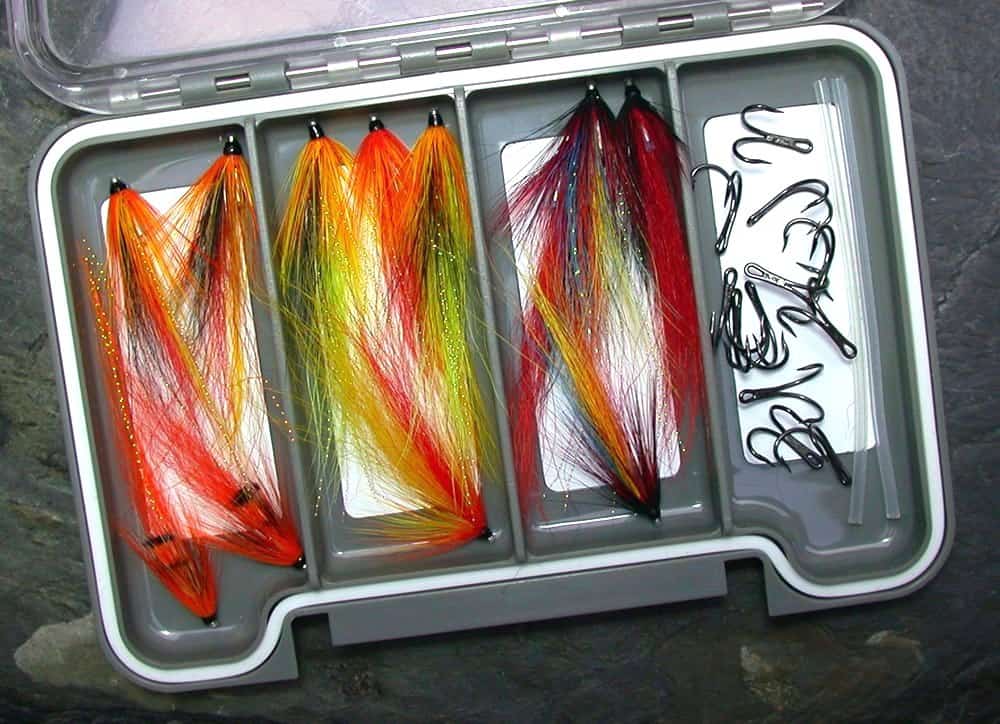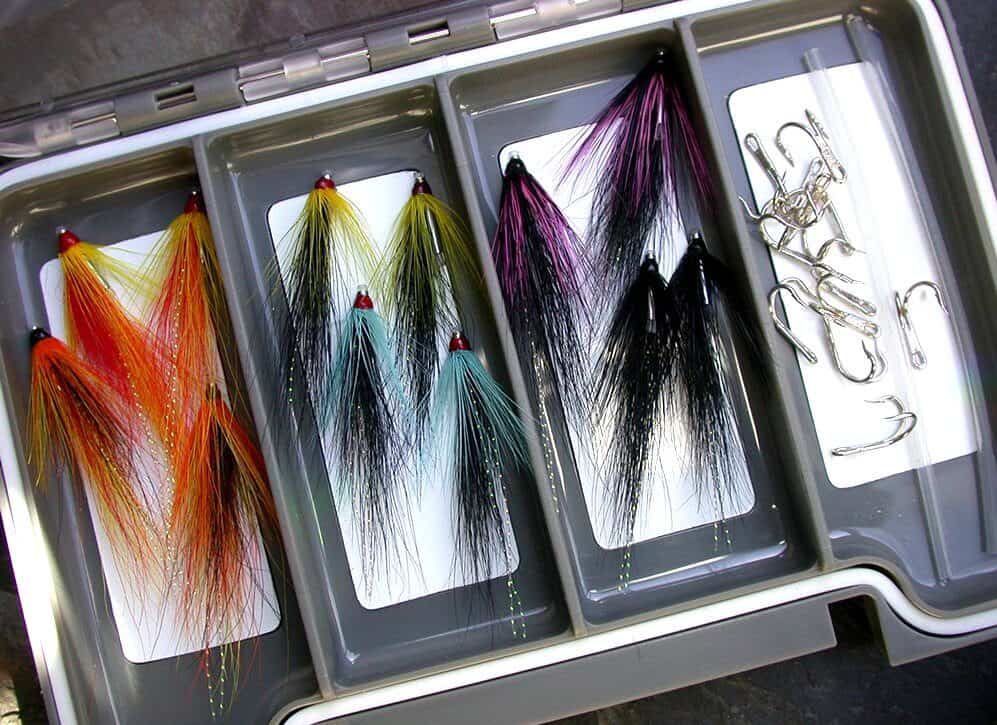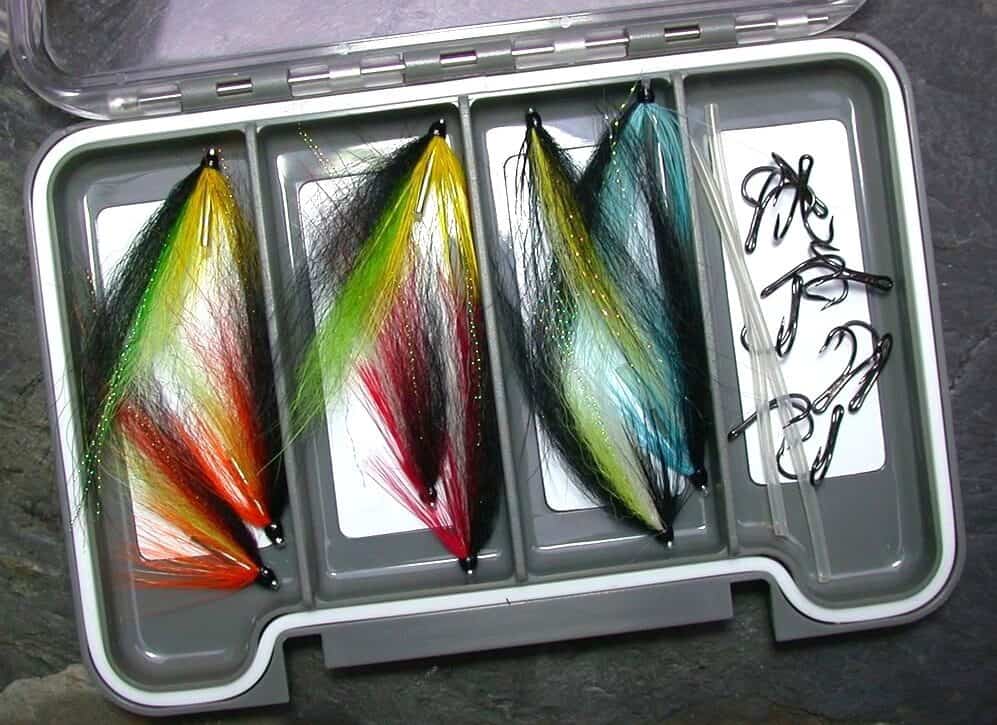Tube Flies and Tube Fly Tying
The importance of tube flies in fly fishing for salmon, sea trout and steelhead
Flies dressed on tubes of many types, sizes and materials have become increasingly popular worldwide in salmon, steelhead and sea trout fly fishing. From the early copper, brass, aluminium and plastic incarnations, the tube fly has been refined and developed to a great extent in recent years, allowing the creative fly tyer to devise tube-based lures for any species and type of fly fishing, from the Templedogs and Sunray Shadows of Scandinavia, to the Intruder tubes of North America, to sea trout needle tubes for night fishing on British rivers.
This website will explore the significance of tube flies in modern fly tying and fly fishing for Atlantic and Pacific salmon, European sea trout and North American steelhead, including a brief history of the development of the tube fly, its advantages over standard traditionally dressed trout, steelhead and salmon fly hooks and some examples of the many and varied modern tube fly materials, styles and patterns available to today’s fly tiers and fly fishers, with particular focus on needle tube flies, a few examples of which are shown below.
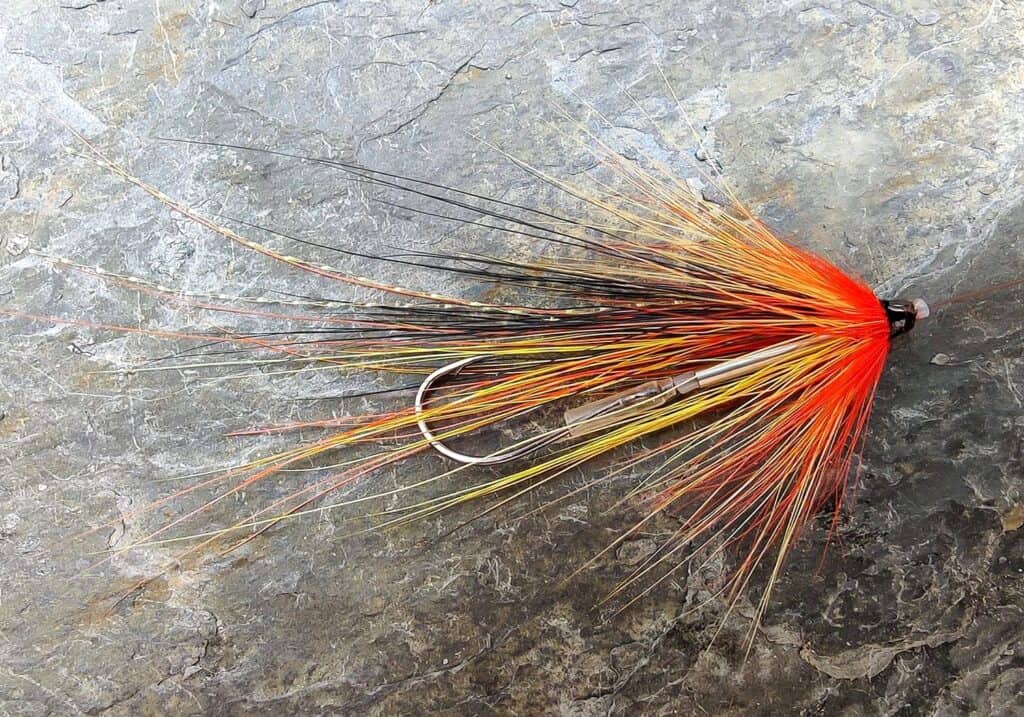
Needle Tubes Versus Waddington Shanks
Ultra-slim stainless steel Needle Tubes (with outside diameters as low as 1.5mm) are made in length from 10mm to 40mm, allowing a wide range of sizes and styles of fly to be tied, from small minitubes to longer sea trout night flies to flies of all sizes and shapes for salmon and steelhead fishing. It might be said that the Needle Tube has rendered the Waddington shank (and other similar wire shanks) practically obsolete, since it offers the angler all the advantages of the Waddington shank (slim, medium weight) as used, for example in the tying of Intruder Flies, with none of the disadvantages (complexity in the construction and difficulty in fitting and changing the hook), The Needle Tube offers the slimness of a wire shank with the simplicity and practicality of a tube, as in the example shown below. See also Tying Intruders on Needle Tubes
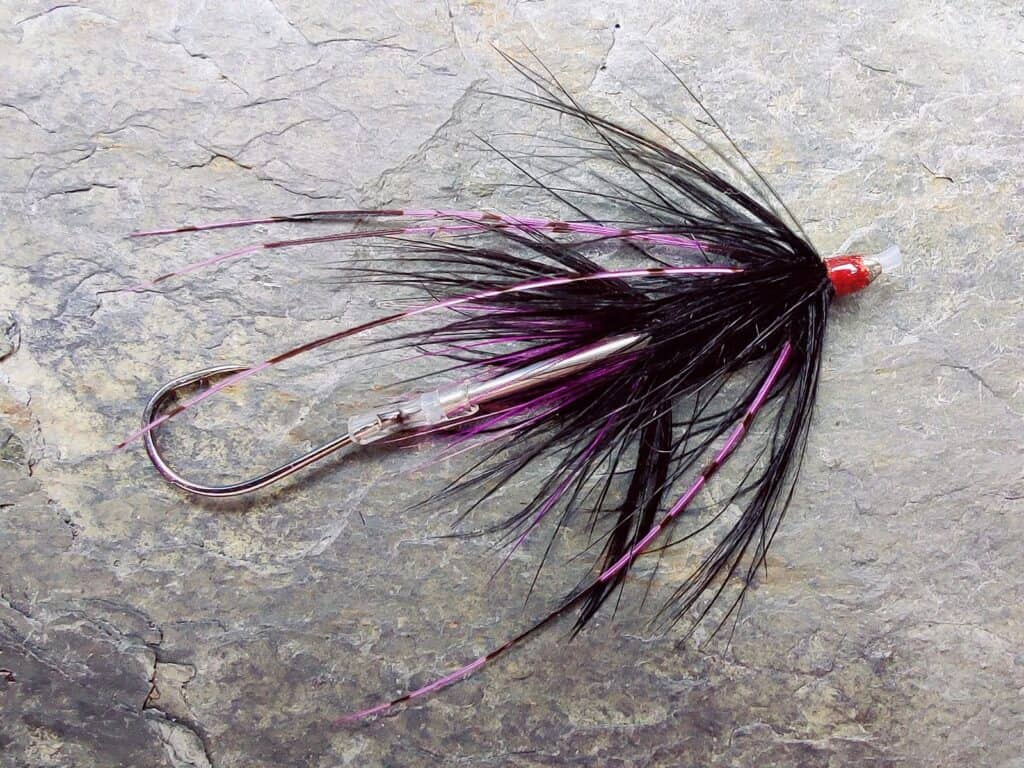
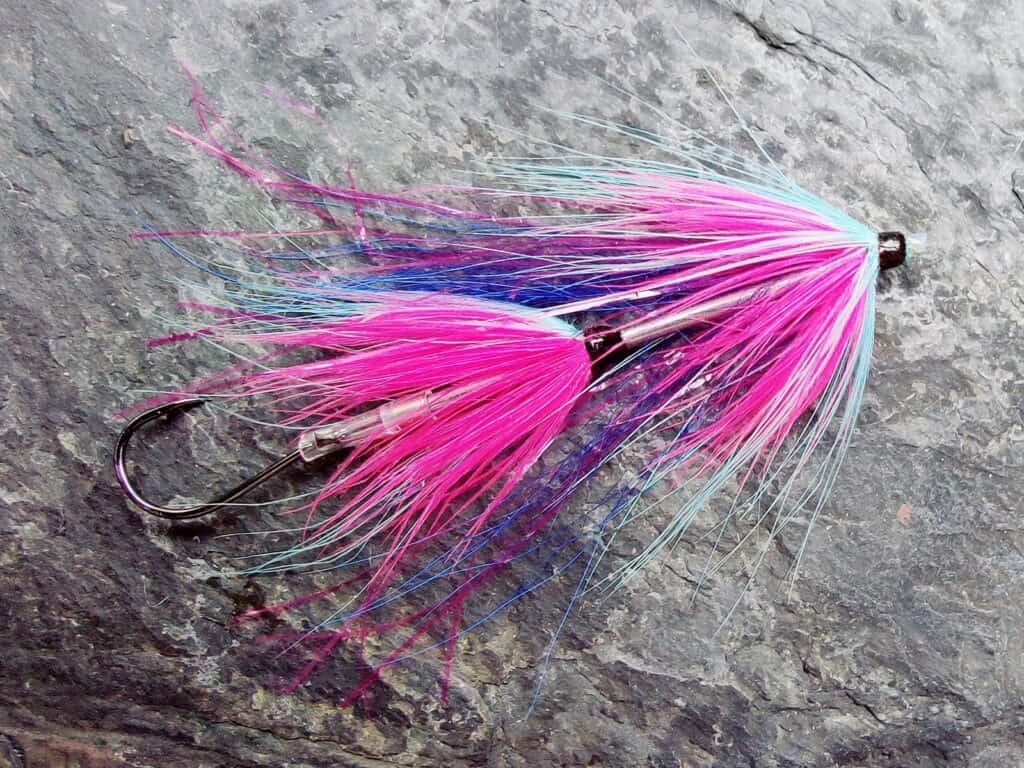
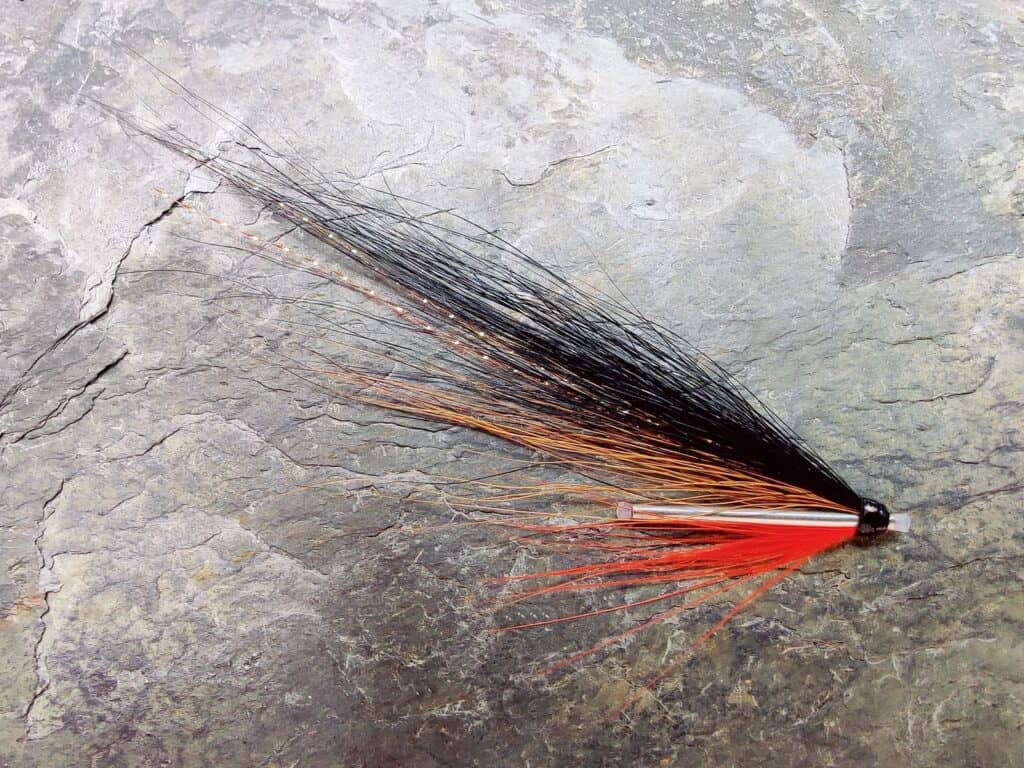
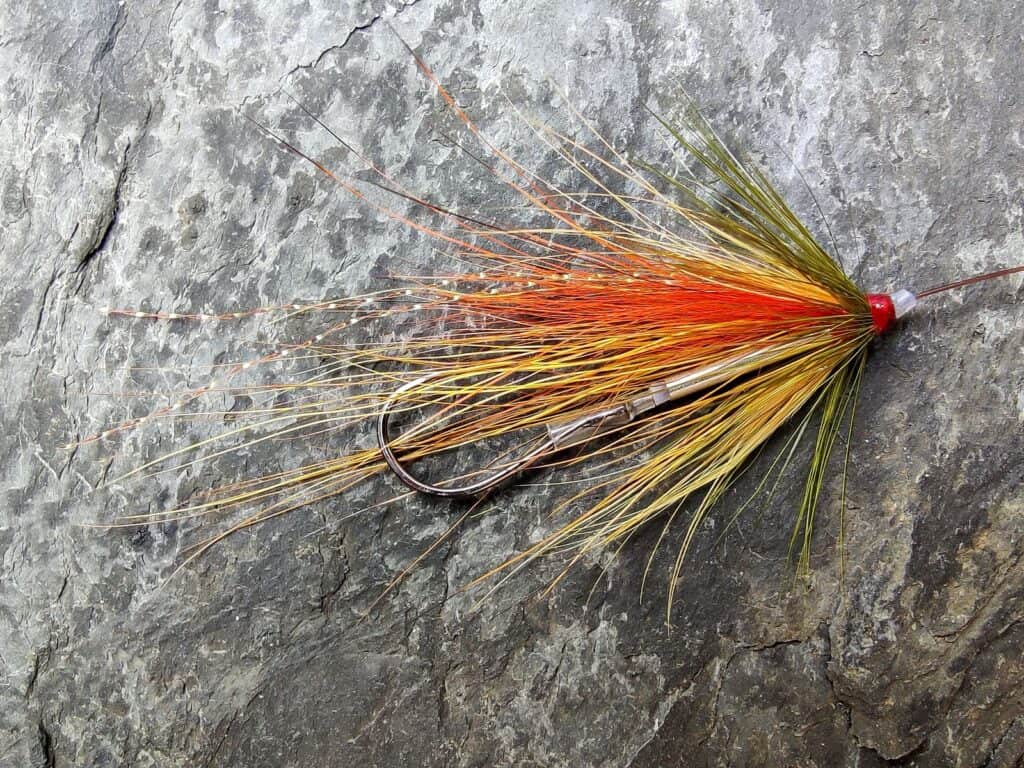
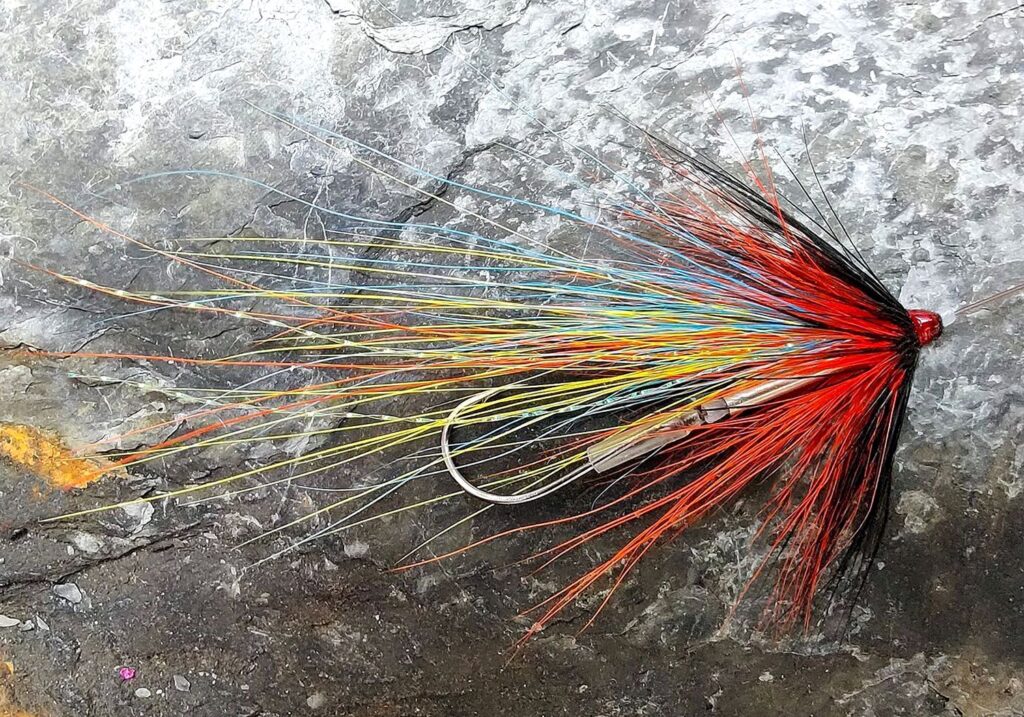
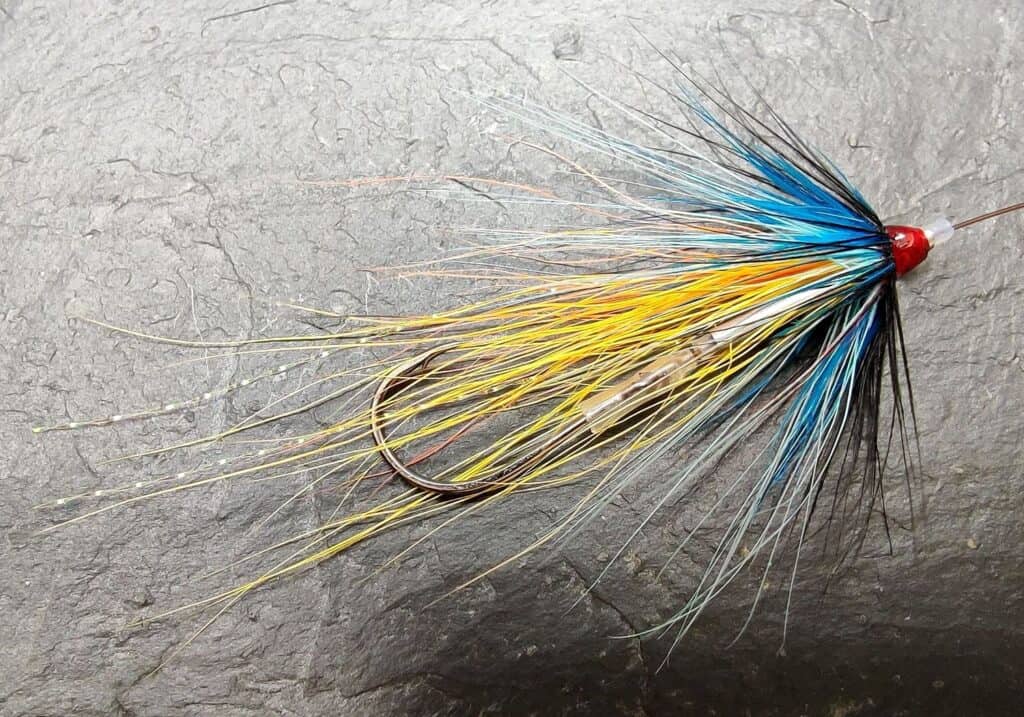
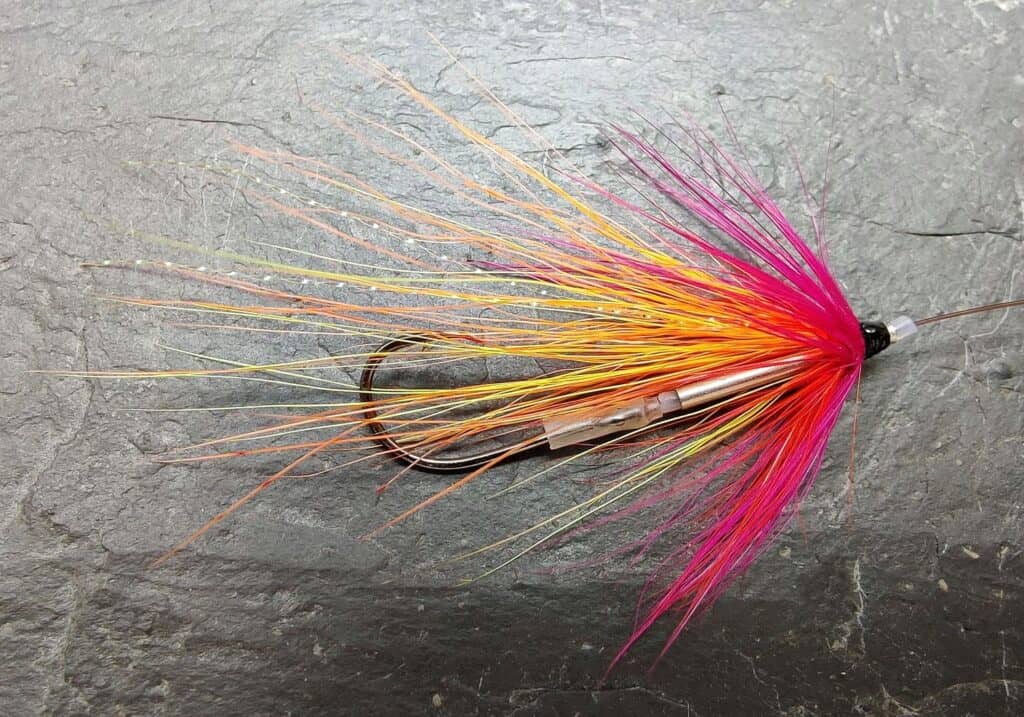
History and Development of the Tube Fly
From around the mid twentieth century, tube flies became an increasingly common weapon in the salmon fly fisher’s armoury. Long and often heavy salmon tube flies gained favour, in the early days particularly, as an alternative to the very large single hooked salmon flies which had been in use for early spring and late autumn fly fishing on the salmon rivers of Scotland and elsewhere. The popularity of the tube fly derived partly from its lower cost, simplicity and general ease of dressing compared to the traditional classic patterns, which often included rare and increasingly expensive exotic feathers in their dressing, and partly from their practicality in fishing.
Early Tube Flies
Thus the length, weight and bulk of the salmon fly could now be more accurately and precisely matched to particular conditions. A heavy copper tube fly of three inches, although not easily cast even on the long heavy rods of the time, could be fished deeply in the cold and often high water of early season, while a lighter and perhaps shorter tube fly, dressed on a plastic or aluminium tube, might be a better choice for less extreme conditions of water and weather. Importantly, if the hook, usually a treble hook fitted to the tail end of the tube fly via a flexible silicone rubber link, was damaged (a common occurrence when the tube fly was fished deeply on a rocky river bed), it could be easily and cheaply replaced, whereas the more traditional fly, often tied at great expense on the large single irons (hooks) of the time, had generally to be discarded when the hook was irreparably damaged.
The early tubes, supplied by such companies as Veniard, were simple affairs – copper, brass, aluminium and plastic tubes of 2.5 to 3mm in diameter in lengths from 1/4 inch to three inches or more, the metal tubes fitted with a plastic liner to prevent chafing of the fly leader. They did the job for Spring and Autumn salmon fishing and were popular on our salmon rivers for decades, indeed they still are, particularly in the shorter lengths, but the longer and heavier of the brass and copper tubes were not easily fished, cast continuously throughout a full day’s fishing on the big salmon rivers in early spring.
Modern Tube Flies
The latter part of the twentieth century and into the new millennium saw many innovations in the design and development of tube flies and tubes manufactured specifically for fly tying. Tubes became available in a wider range of diameters and densities, in a variety of coloured plastics, stainless steel and tungsten, in addition to the now familiar aluminium, brass and copper, for salmon, steelhead and sea trout tube flies. New designs of tubes, in varying densities of metal, are now finely machined in a variety of lengths and shapes to suit every conceivable situation, some painted or powder coated in an attractive range of colours. We have the now well established Slipstream tubes, the newer bottle tubes, Shumakov tubes and Eumer tubes in a wide variety of colours and shapes. Heavy tungsten tubes are now available for extra heavy, quick sinking tube flies. Fine, ultra slim stainless steel tubes with external diameters of only 1.5mm are available in the form of Grays Needle Tubes.
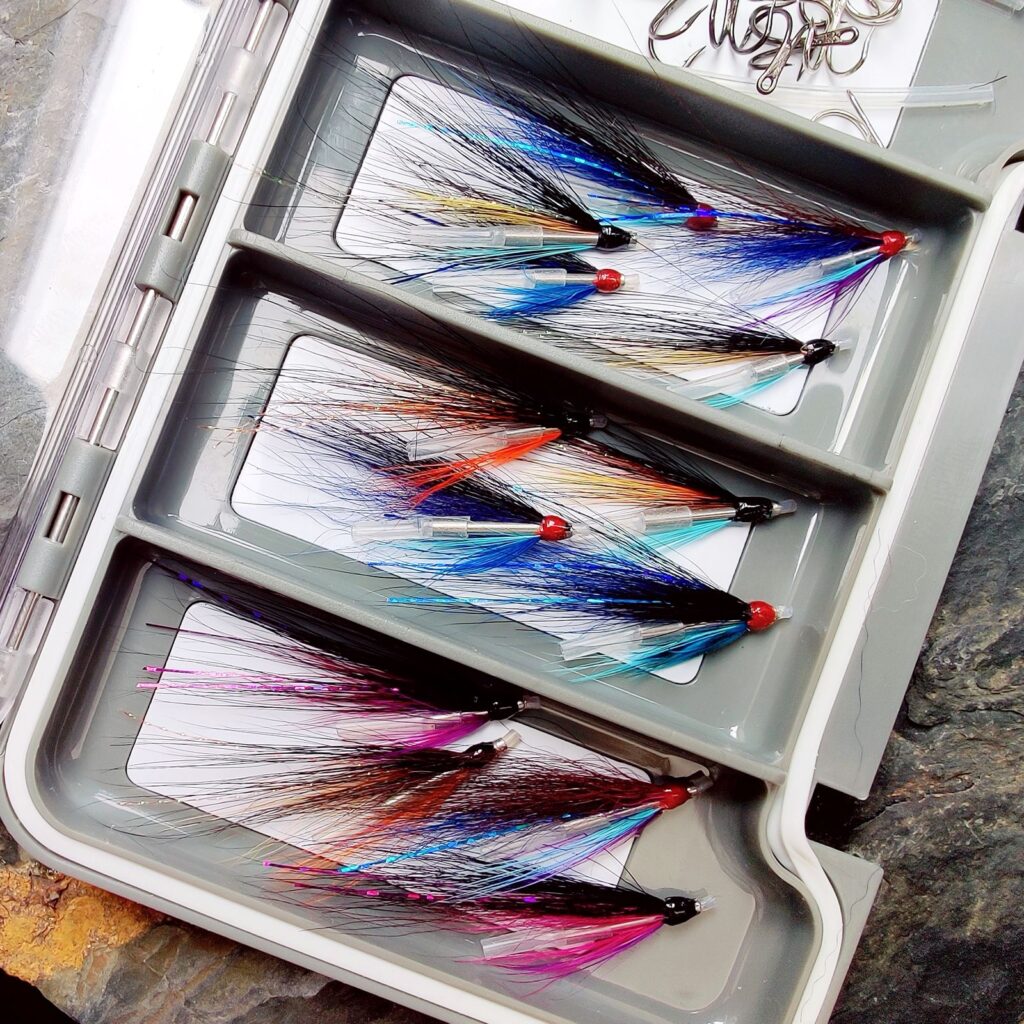
In addition, there is a wide range of turbo discs, coneheads and other attachments, in various shapes, weights and colours, designed to be fitted to the front of a tube fly to provide attraction, weight and balance in the fly. Tube flies may be armed with a variety of hooks, with some tube fly hooks being designed specifically for the purpose. They may be single, double or treble, in varying wire gauges and strengths, barbed or barb-less in a variety of coloured coatings, e.g bronze, black, silver, gold or nickel. All this, combined with the huge variety of materials, both natural and artificial, the wide range of more conventional fly hooks and the availability of purpose designed high quality fly tying vices, vice adaptors and tools, gives huge scope to today’s creative fly tyer, who has very few limits placed upon him through lack of tools and materials.
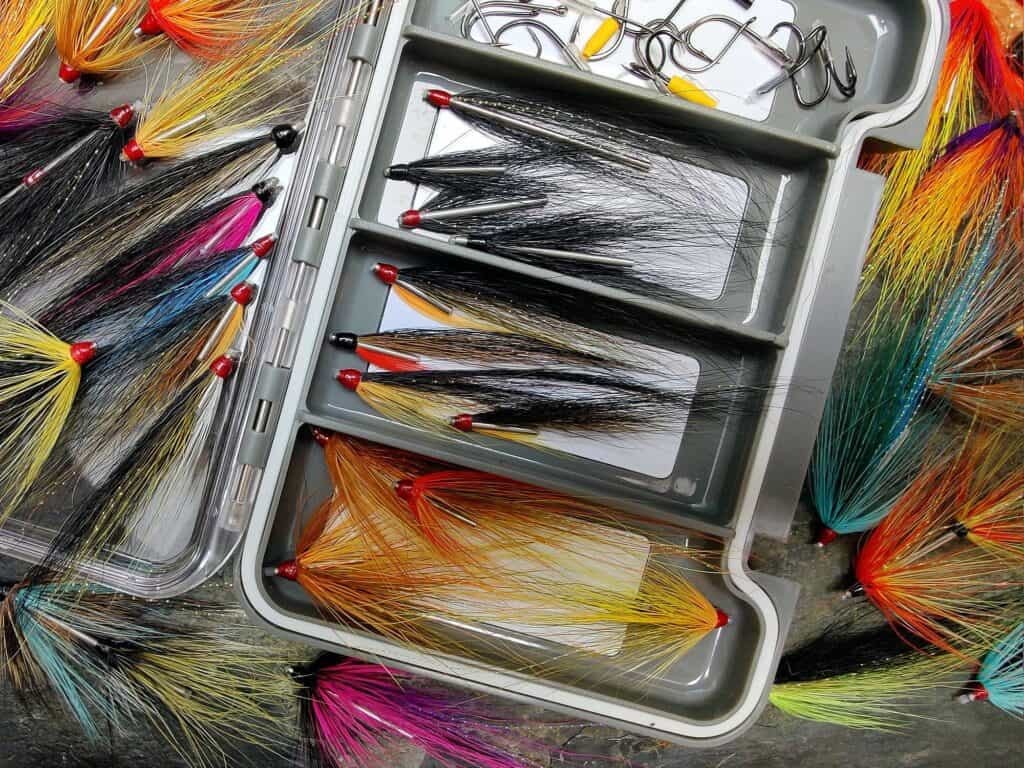
Advantages of the Tube Fly
The tube fly, then, in certain fishing situations, offers several advantages over the conventionally dressed salmon, sea trout or steelhead fly:
- A tube may be dressed in any length in a range of materials, diameters, weights and shapes to suit the prevailing fishing conditions.
- The tube fly may be fitted with the fisherman’s preferred type of hook – single, double, treble, barbed or de-barbed.
- The hook may be left to swing freely at the tail of the tube or attached via a flexible silicone hook link. In either case the hook is free to move when a fish is hooked and exerts little in the way of leverage to loosen the hook hold in play.
- The hook may be quickly and simply replaced when damaged, thus extending the usable life of the tube fly.
Examples of Tube Flies for Salmon and Sea Trout Fishing
Shown below are some examples of salmon, sea trout and steelhead tube flies, dressed on Gray’s stainless steel Needle Tubes, which, since their introduction in 2008, have proven extremely effective both at home and abroad. The Needle Tube followed on from the earlier success of the Needle Fly, devised in the late nineteen nineties as an ultra-slim lure for late night sea trout fishing. The Needle Tube, although not quite as thin as the original Needle Fly, offered some advantages, both in dressing and in practical fishing convenience. The needle tube fly can be very simple to tie, requiring no body dressing and little in the way of materials, particularly if dressed, as origianally conceived, as a slim, tenuous, impressionistic lure. The bare stainless steel of the tube, made from the same tubing used for hypodermic needles, can be left undressed with a simple dressing, often comprising no more than some hair and a hackle or two, tied in at the head, as in the examples below. The result, regardless of the style or pattern of fly selected, is a simple, effective lure, for salmon, sea trout or steelhead, lighter and more easily cast than the heavier and bulkier copper and brass tubes, yet with enough weight and slimness to sink more easily to a fishable depth than the lighter aluminium tubes.
Salmon Tube Flies
Tube flies have been very popular with salmon fly fishermen for a long time. In recent years, the range of tubes manufactured specifically for use in salmon fishing has grown enormously, in terms of materials, sizes, weights, densities and shapes. This has enabled the keen fly tyer to create new tube flies for fishing in a variety of places, circumstances, seasons and conditions.
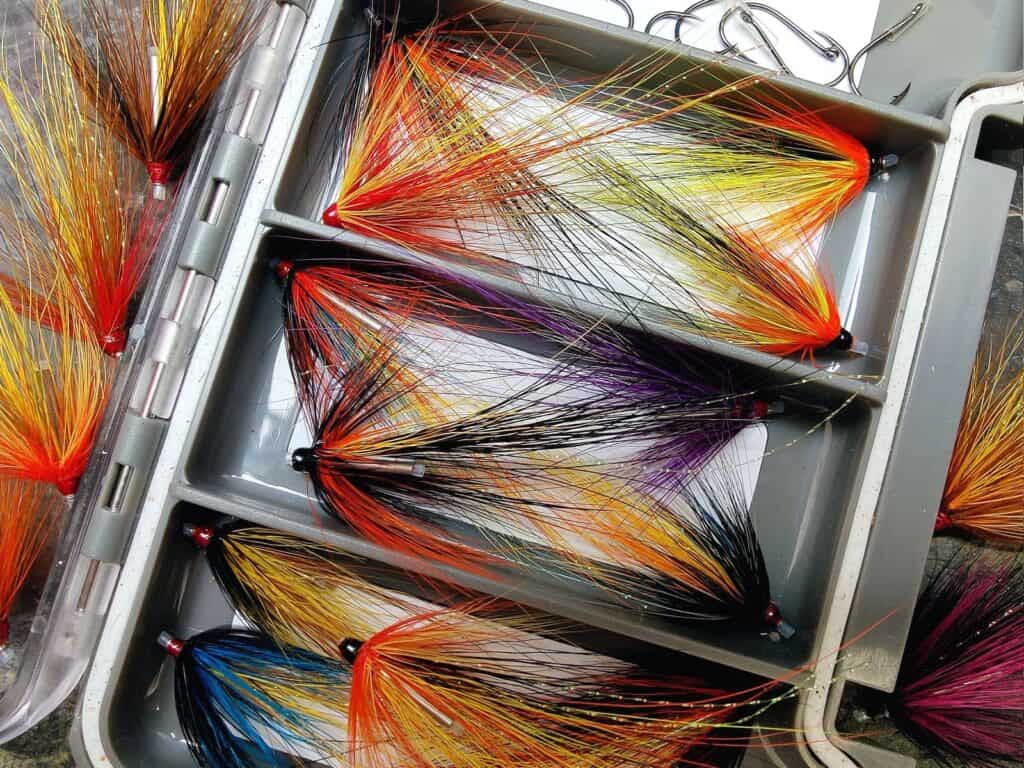
Sea Trout Tube Flies
Tube flies have also been a popular choice of the sea trout night fisherman, often in a range of lengths of plastic or aluminium tubing. More recently, the development of the stainless steel Needle Tube has allowed the creation of extremely slim lures, to be fished a little deeper than the plastic and aluminium tubes but not so deeply as the heavier copper and brass tubes, which are more suited to daytime fishing in higher water. They can also be dressed very simply by leaving the shiny stainless steel shank undressed, as in the examples below.
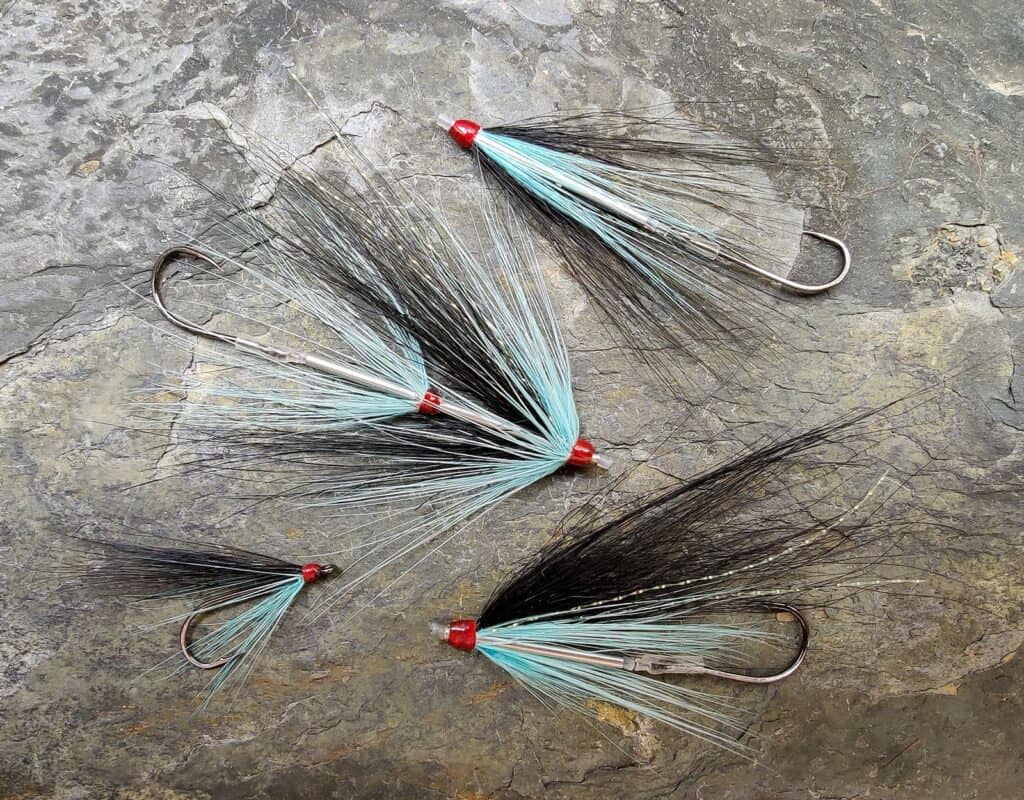
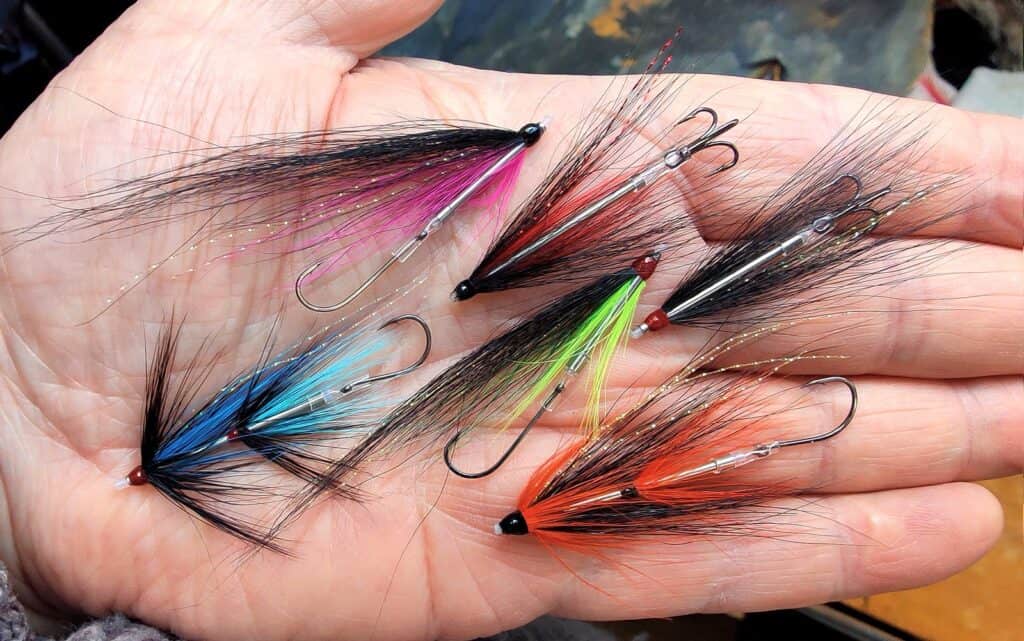
Steelhead Tube Flies
A range of steelhead flies may be dressed successfully on needle tubes, for example as shrimp or baitfish patterns, as in the examples below, dressed by Bob Schoeller for the steelhead of Lake Erie and its tributary streams, where they have been remarkably effective.
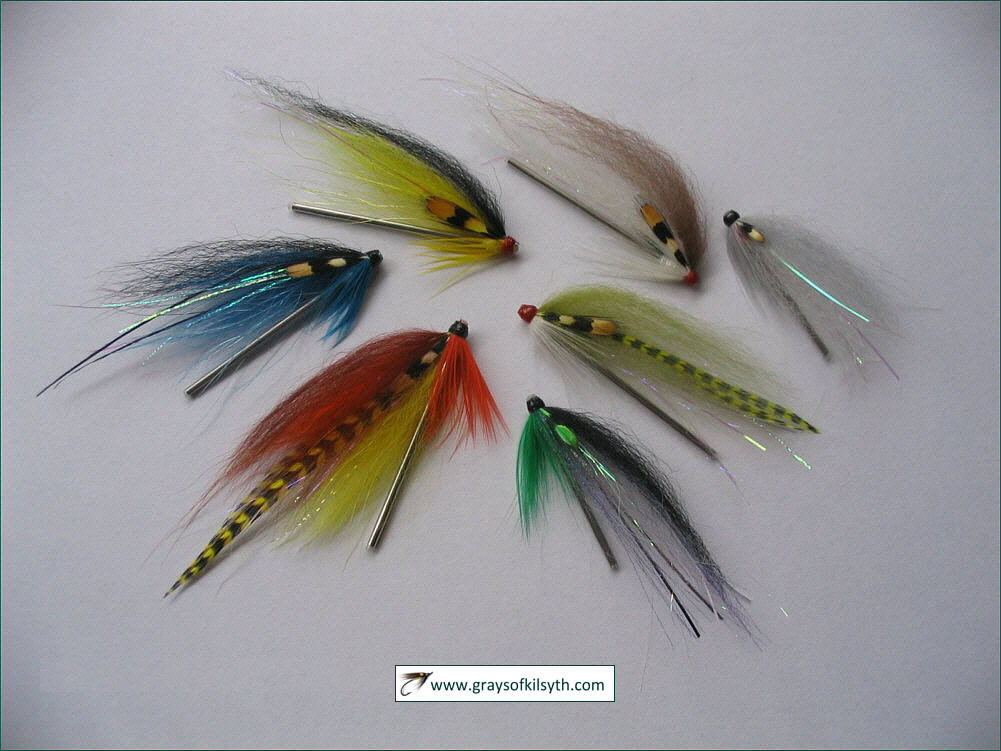
Intruder Tube Flies
Intruder Flies have long been the mainstay of fly fishing for Chinook and Steelhead on the rivers of the Pacific west coast of the United States and British Columbia. Originally dressed on wire shanks with a trailing hook attached by means of a wire or nylon loop secured to the shank by thread and glue, Intruder flies are now increasingly being dressed on tubes. Needle tubes are similar in diameter and weigh to Waddington wire shanks and are ideally suited to the dressing of Intruder style lures. See Intruder Tube Flies
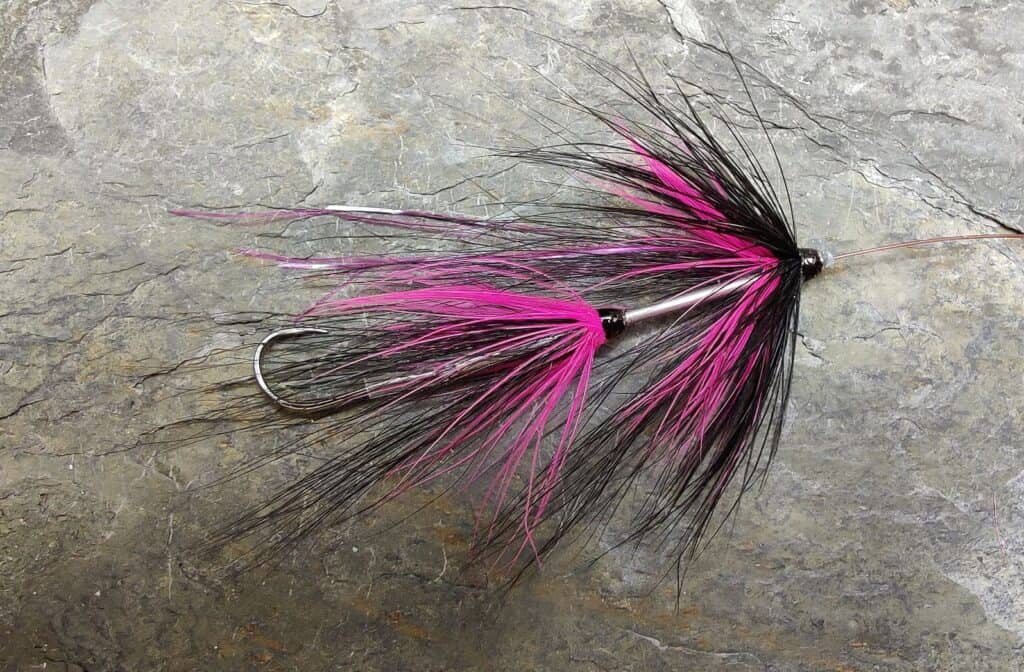
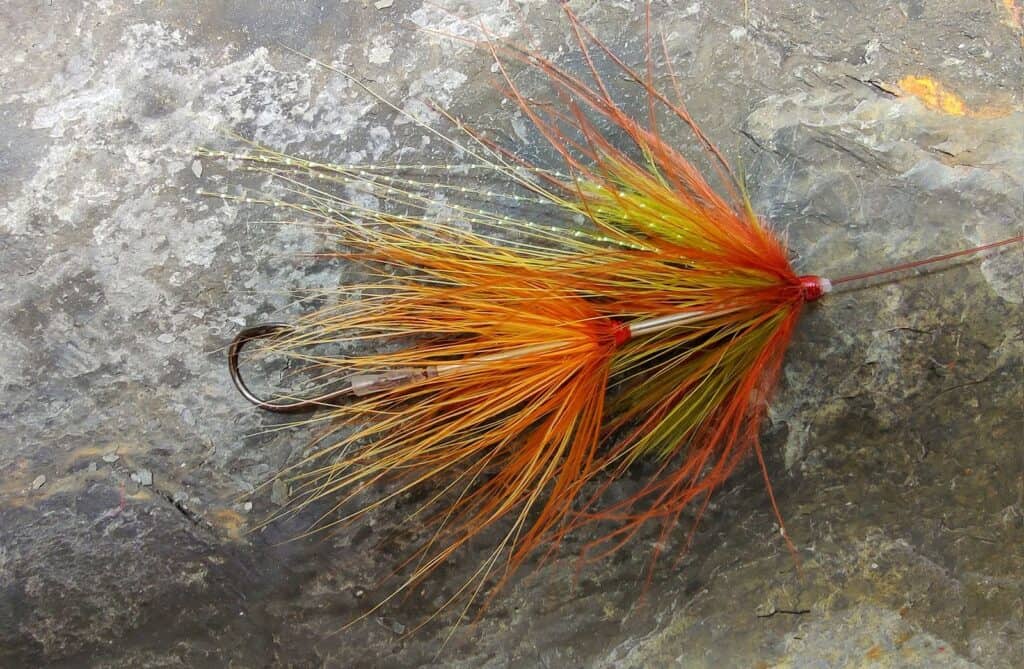
Read more on tying Intruder Tube Flies and Sea Trout Intruders also Twin Tube Intruders
Needle tubes may of course be adapted to the tying of tube flies for any predatory species in fresh or salt water, with the diameter, length, style of dressing and hook type selected accordingly. Since their introduction in 2008, Needle Tube Flies have proven extremely effective for a variety of species, for example salmon (both Atlantic and Pacific salmon) in North America and Europe, sea trout in Scotland, England, Wales, Iceland and Norway, rainbow trout in Japan and steelhead in both Canada and the United States.
See Fishing with Needle Tube Flies
GRAY’S NEEDLE TUBE FLIES
Needle Tubes and Needle Tube Fly selections are available from Grays of Kilsyth in Scotland. Shown below are a few boxed selections of Needle Tube Flies for salmon and sea trout fishing.
